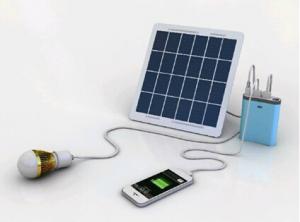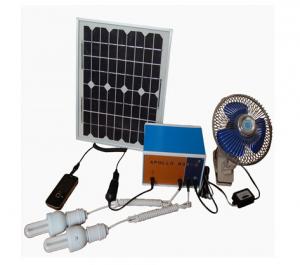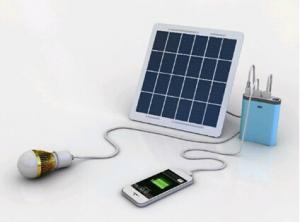CNBM Solar Home System Roof System Capacity-50W
- Loading Port:
- Shanghai
- Payment Terms:
- TT or LC
- Min Order Qty:
- 500 set
- Supply Capability:
- 10000 set/month
OKorder Service Pledge
OKorder Financial Service
You Might Also Like
Introduction of our company
We are the first solar racking system developer in China, who committed to solar racking system R&D, producing and marketing for about 10 years. We were the OEM for Sunpower, and are one of the largest rooftop solar racking system supplier in Japan and Australia now.
We are persisting the path of specialization, scale and internationalization development. We have been imported the international advanced technology equipment for manufacturing , assembling and testing. Frontier solar racking system is with own patents. The dynamic wind resistance reliability of our racking system can up to 270km/h. Therefore, superior product quality with more than 25 years' durability and perfect after-sale service have earned us a high reputation in PV industry worldwide.

Working Principle of Solar Roof System
The stand alone Solar Home System is an off-grid solar system which uses batteries to store the solar energy. Stand alone solar system solutions design for those who are not able or willing to connect to electricity grid.
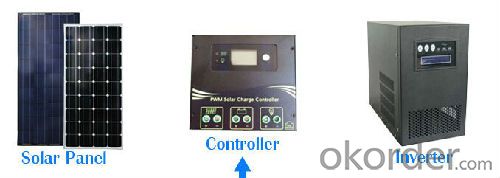
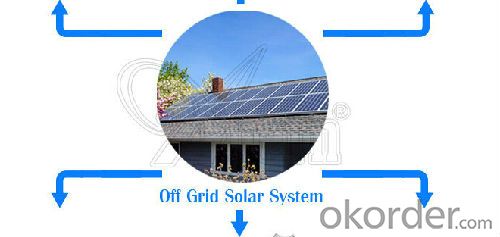

Specification of Solar Home System
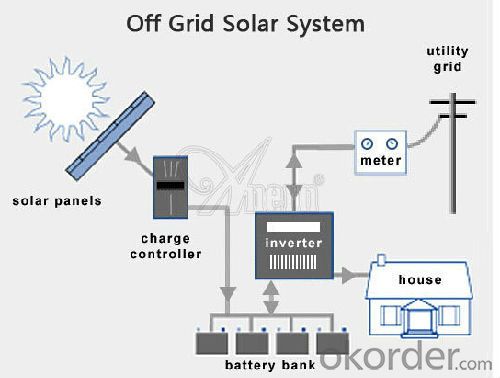
Product Features of Solar Home System
Off grid solar power system is mainly used for application with relatively-small power consumption, and the areas have no grid network coverage, or grid power is unstable or outage condition.
It’s composed of solar panels, hybrid solar inverter, battery bank, solar panel mounting racks, and other accessories required fora complete home solar power system.
The battery bank gives a stable power output to the solar inverter which converts DC to AC to power loads, and provides power backup in rainy or cloudy days.
The solar panels generate electricity at daytime and charge the battery bank.
The off grid home solar power system provides grid power bypass in case of battery power shortage when sunshine is not enough.
All the off grid home solar power system configurations are worked out by scientific calculation and design.
Advantage of Our Solar Home System
1. solar power system operation can automatically control and manual control modes.
2. Easy installation, energy saving (saving coal and petroleum resources, reduce pollution / noise emissions); do not need to lay long-distance transmission lines, do not build large substation, system stability, less maintenance, low maintenance cost, daily / each month / year electricity clearly visible, and can be entered into the computer record.
This solar system configuration is for reference. It can be adjusted based on actual condition and requirement. All parts have been tested and proven in actual operation with enough reliability and stability. It’s suggested to source whole system as a pack from us to guarantee the system compatibility.
Terms and Conditions
1. Trade terms: FOB Shanghai
2. Payment terms: 30% T/T, balanced before shipment/ LC at sight before shipment. Actual Terms can be negotiated for big order.
3. Package: Exported standard package suitable for tough handling and sea transport.
4. Delivery: Goods to be ready within 10~30 days depending on order quantity.
5. Warranty: 10 years for solar panel, 2 years for controller/inverter/battery.
FAQ
Q1. Can we design packaging?
Yes, but there is with quantity limitation. For 10,000 pcs, we will make the packing free for the client, and if less than 10,000 pcs, we can talk, the package is free or little money will be charged.
Q2. Can we add our logo on products?
Yes, there are several ways to do this. We can put the label of your logo on the products or make the silk print of your logo on the products. It is free.
Q3. can we customize product?
OEM and ODM are welcomed from Anern. We have rich experiences in this area.
Q4. What is your company return policy?
If we Anern breaks the contract of any agreement on price, quality and any other terms and conditions on the contract, the buyer can return the goods back to us and we will send the money back to buyers. Force majeure and god act are excepted.
Q5. What is your main product line is made?
LED street light and solar street lighting system, LED high bay light, LED flood light, LED tube light, bulb light, panel light, ceiling and down lights, all kinds of indoor lighting and outdoor lighting are available.
Q6.If I have a question I would like advice on how to contact you?
The best way is by e-mail. Tel, wechat, whatsapp, skype, contact us on our website online service worker are good ways to reach us also.
Q7. What will you provide services?
Solution providing, engineering, system design, best products suggestion, quality control, delivery, after sale service and many others. You can get our feedback during 24 hours.
- Q:Can solar energy systems be used in remote areas without access to the grid?
- Yes, solar energy systems can be used in remote areas without access to the grid. Solar panels can generate electricity by harnessing sunlight, which can then be stored in batteries for use when the sun is not available. This makes solar energy systems a reliable and sustainable solution for powering remote areas that are off the grid.
- Q:What is the role of solar energy tracking systems?
- Solar energy tracking systems are specifically designed to maximize the efficiency and output of solar panels by ensuring they always face the sun at the most advantageous angle. These systems utilize sensors and motors to monitor the sun's movement throughout the day and make necessary adjustments to the position of the solar panels. The primary objective of solar energy tracking systems is to maximize the amount of sunlight that reaches the solar panels. By continuously monitoring the sun's movement, these systems guarantee that the panels are constantly perpendicular to the sun's rays, capturing the greatest possible amount of solar energy. This results in increased energy production and enhanced overall system efficiency. Furthermore, solar energy tracking systems can have a significant impact on total energy output throughout the year. By tracking the sun's position and adjusting the tilt and azimuth of the solar panels, these systems can optimize energy production during different seasons and at various latitudes. This adaptability is particularly valuable in locations that experience substantial variations in sunlight intensity and angle throughout the year. Apart from maximizing energy production, solar energy tracking systems also offer additional advantages. For instance, by distributing stress and heat evenly across the solar panels, they can prolong the panels' lifespan and enhance their durability. Moreover, these systems can reduce the amount of land required for solar installations, as they allow for higher power density per unit area. Overall, solar energy tracking systems play a vital role in improving the efficiency, output, and longevity of solar energy systems. By continuously tracking the sun's movement, these systems optimize energy production, increase system efficiency, and ultimately contribute to the wider adoption of renewable energy sources.
- Q:Can solar energy systems be used in areas with high seismic activity?
- Yes, solar energy systems can be used in areas with high seismic activity. However, it is essential to design and engineer these systems to withstand seismic forces. This can be achieved by utilizing specialized mounting structures, such as ballasted or anchored systems, and ensuring proper installation and maintenance. Additionally, advanced technologies like micro-inverters or power optimizers can enhance the system's resilience by minimizing the impact of potential module shading or damage caused by seismic events. Overall, with proper planning and precautions, solar energy systems can be successfully implemented in areas prone to high seismic activity.
- Q:Can solar energy systems be used in powering beauty salons or spas?
- Yes, solar energy systems can definitely be used to power beauty salons or spas. Solar energy is a renewable and sustainable source of power that can help reduce the dependence on grid electricity and minimize the carbon footprint of these establishments. By installing solar panels on the roof or other suitable areas, beauty salons and spas can generate their own electricity and reduce their energy costs in the long run. Beauty salons and spas typically require a significant amount of electricity to operate hair dryers, hair straighteners, curling irons, lighting, air conditioning, and other equipment. Solar energy systems can easily meet these power demands, especially during daylight hours when the sun is shining. Excess electricity generated during the day can be stored in batteries or fed back into the grid, ensuring a continuous supply of power at all times. Moreover, solar energy systems can help improve the sustainability and environmental performance of beauty salons and spas. By switching to solar power, these establishments can significantly reduce their carbon emissions and contribute to the fight against climate change. Additionally, using solar energy can help attract environmentally conscious customers who appreciate businesses that prioritize sustainability. In summary, solar energy systems are a viable option for powering beauty salons and spas. They can provide a reliable and sustainable source of electricity, reduce energy costs, and contribute to a greener and more environmentally friendly business operation.
- Q:Are there any government incentives for installing solar energy systems?
- Yes, there are government incentives for installing solar energy systems. Various countries offer incentives such as tax credits, grants, and rebates to encourage the adoption of solar energy. These incentives aim to lower the upfront costs of installation and make solar energy more affordable and accessible to homeowners and businesses. Additionally, some governments may provide feed-in tariffs or net-metering programs that allow solar system owners to earn credits or receive compensation for excess electricity generated.
- Q:How long does a solar energy system last?
- A solar energy system typically lasts for around 25 to 30 years.
- Q:What is the role of solar energy forecasting in grid integration?
- The role of solar energy forecasting in grid integration is vital for effectively managing the integration of solar power into the electrical grid. Solar energy forecasting provides accurate predictions of solar power generation, enabling grid operators and energy market participants to plan and optimize the operation of the grid. Solar energy is intermittent and variable, as it depends on weather conditions and the position of the sun. Therefore, accurate forecasting of solar power generation helps grid operators to anticipate fluctuations in solar energy supply and plan for potential imbalances between supply and demand. Grid integration of solar energy requires balancing the variability of solar power generation with the overall electricity demand. Solar energy forecasting plays a critical role in this process by providing real-time predictions of solar output, allowing grid operators to adjust other sources of power generation or storage to maintain grid stability. Moreover, solar energy forecasting is essential for the effective utilization of solar power in energy markets. Accurate forecasts enable energy market participants to optimize their trading strategies, determine the optimal dispatch of power generation assets, and manage their portfolio effectively. This helps to reduce the cost of integrating solar energy into the grid and enhances the overall economics of renewable energy. Additionally, solar energy forecasting contributes to the efficient operation of grid infrastructure. By providing accurate predictions of solar power generation, grid operators can plan the deployment and operation of transmission and distribution infrastructure, ensuring that it can handle the increasing penetration of solar energy without compromising grid reliability. Overall, solar energy forecasting plays a crucial role in grid integration by providing accurate predictions of solar power generation, allowing grid operators and energy market participants to effectively manage the integration of solar energy into the electrical grid, optimize energy trading strategies, maintain grid stability, and efficiently operate grid infrastructure.
- Q:Can solar energy systems be used in powering recycling plants or waste management facilities?
- Yes, solar energy systems can definitely be used to power recycling plants or waste management facilities. Solar energy systems harness the power of the sun to generate electricity, which can be used to operate various equipment and machinery in these facilities. Recycling plants and waste management facilities typically require a significant amount of energy to power their operations, including sorting and processing machines, conveyor belts, and other equipment. By installing solar panels on the roofs or in the vicinity of these facilities, they can generate clean and renewable electricity to significantly reduce their reliance on traditional energy sources. Solar energy systems offer several advantages for recycling plants and waste management facilities. Firstly, they provide a reliable and consistent source of energy, as the sun is abundant and available in most regions throughout the year. Unlike fossil fuels or other non-renewable energy sources, solar energy systems do not deplete natural resources or contribute to greenhouse gas emissions, making them environmentally friendly. This aligns with the sustainability goals of recycling plants and waste management facilities, which are focused on reducing the environmental impact of waste management processes. Additionally, solar energy systems can help these facilities save on energy costs. Once the initial investment in solar panels is made, the ongoing operational costs are relatively low. Furthermore, some regions offer incentives and financial support for the installation of solar energy systems, which can further offset the initial investment and make it more financially attractive. Furthermore, recycling plants and waste management facilities often have large surface areas available for solar panel installations, such as rooftops or open fields. This makes it easier to install a sufficient number of solar panels to meet the energy demands of these facilities. In some cases, excess energy generated by the solar panels can even be fed back into the electrical grid, allowing the facilities to earn revenue from the surplus electricity. In conclusion, solar energy systems can be effectively used in powering recycling plants or waste management facilities. They offer a sustainable and cost-effective solution, reducing reliance on traditional energy sources while helping these facilities achieve their environmental goals.
- Q:How much do solar energy systems cost?
- The cost of solar energy systems varies depending on several factors such as the size of the system, the location, and the specific components used. On average, a residential solar system can range from $15,000 to $25,000 after accounting for federal tax incentives and other rebates. However, it's important to note that prices have been declining rapidly in recent years, making solar energy more affordable and cost-effective in the long run.
- Q:How much space do solar panels take up on a roof?
- The amount of space solar panels take up on a roof depends on several factors such as the size and type of panels used, as well as the specific layout and orientation of the roof. On average, solar panels typically require around 10-12 square feet of space per kilowatt of power capacity.
1. Manufacturer Overview |
|
|---|---|
| Location | |
| Year Established | |
| Annual Output Value | |
| Main Markets | |
| Company Certifications | |
2. Manufacturer Certificates |
|
|---|---|
| a) Certification Name | |
| Range | |
| Reference | |
| Validity Period | |
3. Manufacturer Capability |
|
|---|---|
| a)Trade Capacity | |
| Nearest Port | |
| Export Percentage | |
| No.of Employees in Trade Department | |
| Language Spoken: | |
| b)Factory Information | |
| Factory Size: | |
| No. of Production Lines | |
| Contract Manufacturing | |
| Product Price Range | |
Send your message to us
CNBM Solar Home System Roof System Capacity-50W
- Loading Port:
- Shanghai
- Payment Terms:
- TT or LC
- Min Order Qty:
- 500 set
- Supply Capability:
- 10000 set/month
OKorder Service Pledge
OKorder Financial Service
Similar products
New products
Hot products
Related keywords
